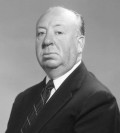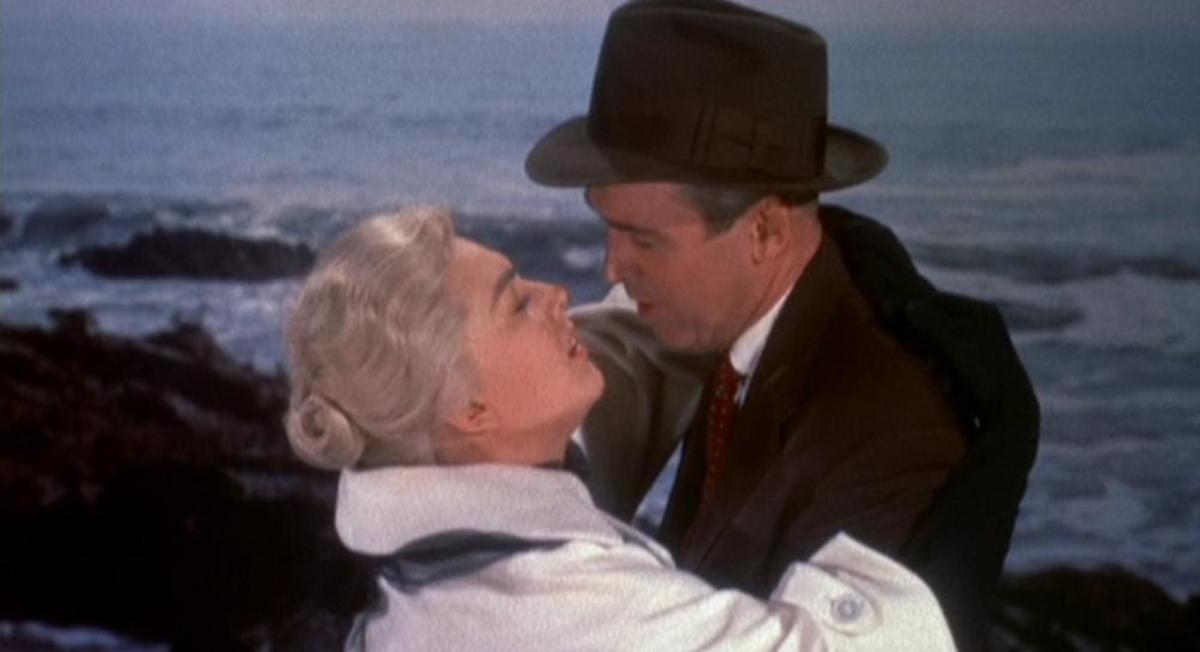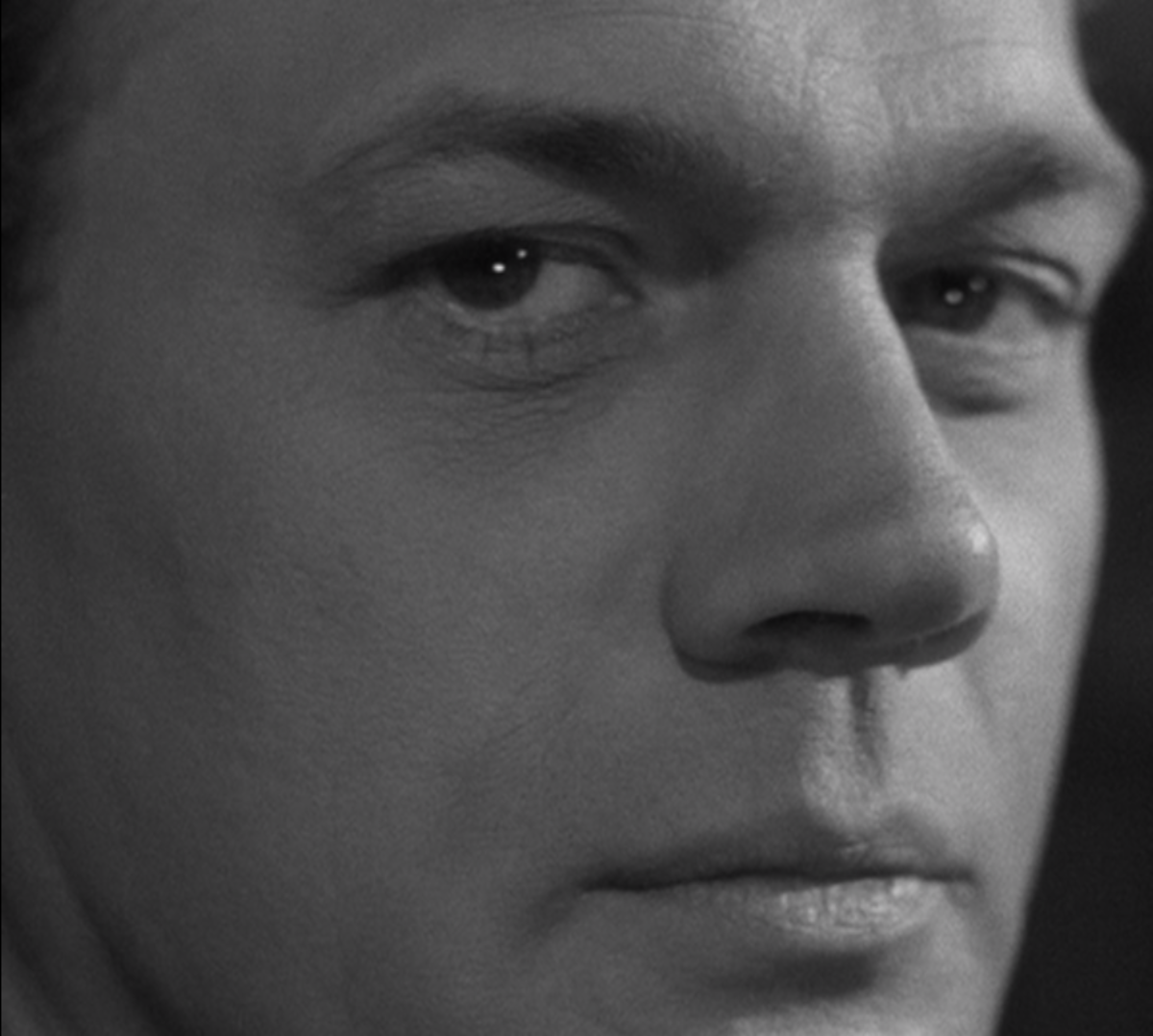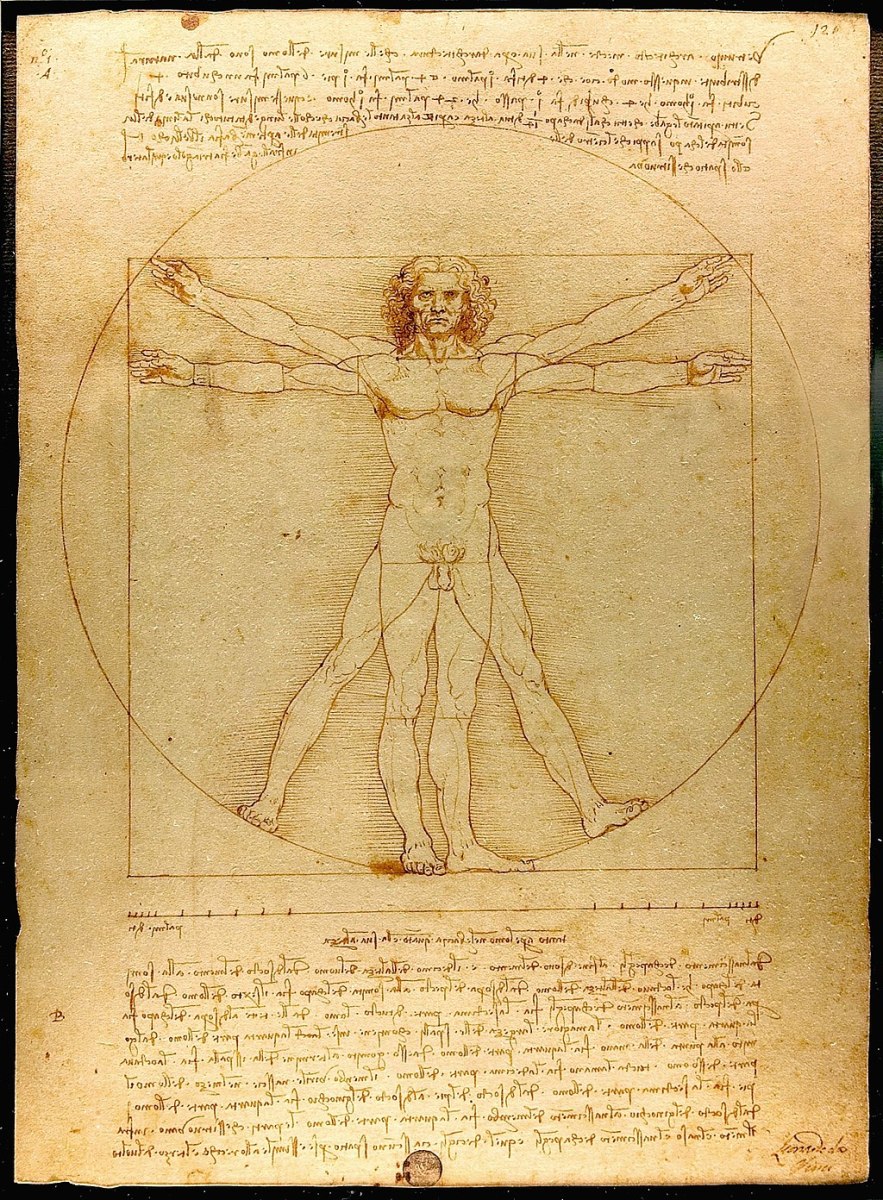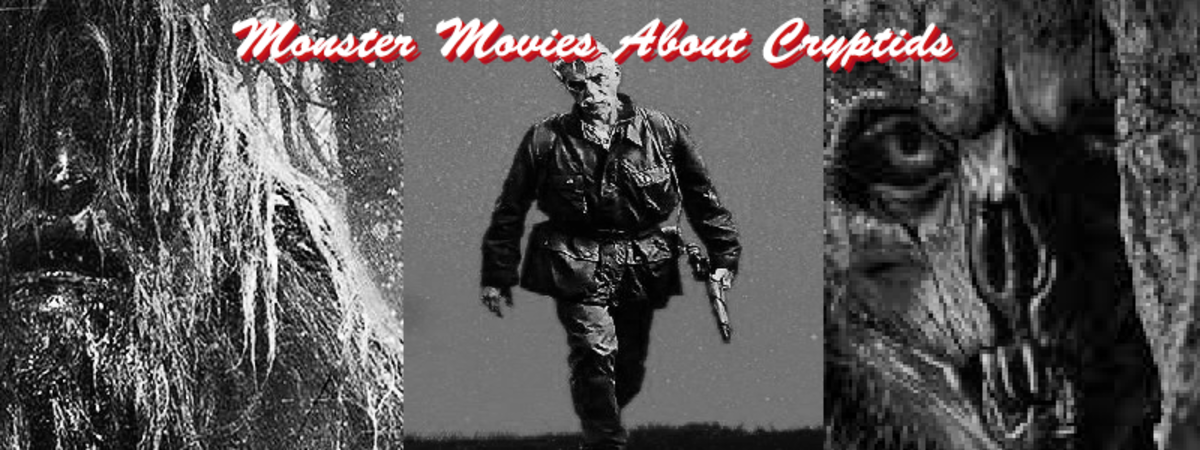Alfred Hitchcock's PSYCHO: The Camera Speaks
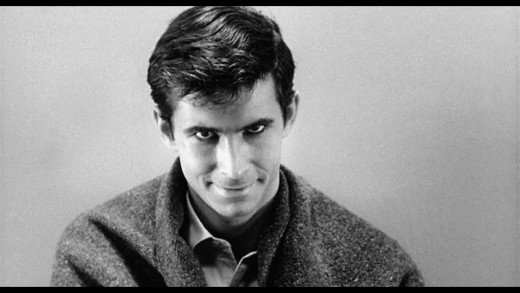
Alfred Hitchcock’s 'Psycho'. From the very beginning Bernard Hermann's music sets the tone. Black and grey lines appear and exit. The opening credits race in from left and right. Our eyes are working overtime. As spectators, we are constantly caught off guard. When the word 'Psycho' appears, the letters twitch, fragment, and split into two. Everything is alive. Nothing simply is. A perfect intro to a film that revels in its ability to shock and subvert expectation.
What I want to do today is look at the film from the perspective of its most captivating character – the camera! - and show that everything we need to know about conflict and theme in Hitchcock’s masterpiece is told before anyone speaks.
In the first scene, the camera begins at a high angle, flying over the city. The camera pans from left to right. We see the words, ‘Phoenix, Arizona’ and an edit takes place – the camera dissolves into the same shot of Phoenix, only closer. The camera continues to pan from left to right. We see the words ‘Friday, December the Eleventh’. And again, the camera dissolves into a closer shot.
The camera continues to pan from left to right, but here you see that it also moves in on these two buildings. We see the words ‘Two Forty-Three p.m.’, and the camera dissolves into a shot of this building. The camera moves in. Another edit takes place but this time it is a cut. We are closing in on our target. The camera stops when it is inside the room; pans from left to right; and stops again when it is framing its subject - Marion.
In this first scene, Hitchcock uses two edits – dissolve and cut – and two camera movements – panning and moving in (which is also called a dolly move).
The camera is characterised!
When the camera is panning and there is a dissolve, it is searching for something.
And when the camera moves in and there is a cut, it has found what it is searching for. These are not randomly selected. The camera is a character in its own right.
With these characterisations in mind we know that...
(1) when the camera scans the city skyline in the first scene, it is searching for something. It is hunting.
(2) The dissolve enables it to move forward, continuing with its search.
(3) Then, the camera both pans and moves in at the same time, moving a fraction quicker. We are closing in on our prey.
(4) The camera dissolves into the building that it has targeted.
(5) The camera focuses on the desired window and moves in.
(6) The use of the cut shows that we are on a fixed and specific trajectory. There’s precision in our attack.
(7) And if there’s any doubt about the intentions of the camera’s gaze, we move in through the partially-opened blind. We are not invited into this scene, we are intruders.
(8) The camera freezes when it is inside the apartment.
(9) Then, the camera (again) pans from left to right, continuing to search.
(10) Sam is out of frame. We are not interested in him. The camera stops when Marion is completely framed. She is our target.
Ok, great. I'm going to return to this opening scene. But right now I want to look at the very, very first frame in which we find Sam and Marion (I recommend you look it up on YouTube)...
Something really interesting is happening in this frame and it has all to do with mise-en-scene. The camera and the male gaze are aligned.
Sam towers over Marion like a predator. Marion is looking up to where we imagine Sam’s face his. She is also looking up towards where the camera has just come from, that is, from a high angle, gazing downwards. Both Sam and the camera gaze down at Marion. The fact that his face is out of frame dehumanises him and briefly aligns him with the camera’s dehumanised gaze. Marion is depicted in white, on a white bed. Sam, on the other hand, is depicted in black and so are the bars of the headboard. The camera frames Sam’s lower abdomen and pelvic region before it frames the person. Marion is framed underneath. The mise-en-scene alerts us to just how sexualised this frame is.
The black bars extend from Sam’s black trousers over Marion’s body and plunge into her. She is caged. She is… assaulted.
* * *
Camera movements and edits, as well as the frame we have just seen, characterise the camera as a voyeur, a hunter that searches out its prey, and then latches onto it.
The camera’s aerial position above the city, above the mortal plain and its capacity to move through the window also informs us of the camera’s function.
Look at the beginning of Roman Polanski’s ‘Rosemary’s Baby’ eight years after ‘Psycho’. The camera also begins in an aerial position. It pans from right to left, showing the city from afar until it comes to a building full of windows. The camera continues to search as it does in Psycho and eventually stops when it has arrived at the desired building. The relevance of this shot is made clear when we know that the film deals with supernatural forces and that we have a blonde female protagonist like we do in Psycho isolated and bullied by a patriarchal society.
Hitchcock's camera is characterised as uncanny. Its movements towards the two lovers through the small opening in the window show that our viewpoint is not a simple reflection of the characters’ movements and behaviour. We are beyond the mortal plain.
Imagine if we hadn’t had the aerial shot beforehand and the scene begun in the apartment with the film's lovers. How would this have affected our relationship to the characters? The camera mirrors the characters’ movements as we often see in Hitchcock’s films (and which we see David Fincher, a Hitchcock fanatic, doing all the time in his films). But the camera of 'Psycho' is not the objective representation of the character’s behaviour. The relationship between character and camera is not impersonal. After all, the camera is given freedom that is not dependent on the characters’ behaviour. It can move around as it wants to. As we have already seen, it can pan, move in, and freeze. The camera often mirrors the characters’ movements perfectly, but this is because the camera wants to. Not so much an objective representation of character behaviour as a predator stalking its prey, aroused by movement, never letting it out of sight.
* * *
Hitchcock provides us many clues as to how we should understand the camera’s gaze. For example, the voyeurism of Norman Bates is very much like the voyeurism of the camera. The stuffed birds at Bates Motel are such another clue.
In this scene, we see that there are the non-predatory birds such as the bird in repose next to Marion and the birds behind Norman. These birds are on a level lower than the birds of prey that we see in flight above. The talons of the owl are poised to catch. The other bird of prey to its right is also in flight. The non-predatory birds are unaware that they are in perpetual threat of being torn to pieces just like Marion. The camera is the bird of prey, the owl that looks down on the characters below who like the non-predatory birds are completely unaware of their imminent danger. In this scene, Marion is completely unaware of her looming fate. Norman even says to Marion, “you eat like a bird”.
The non-predatory birds next to Marion show that she belongs to these unexpecting victims whereas Norman is framed underneath the owl, the predator. All the information that we need about the relationship between Norman and Marion is provided here. Marion is prey number 1. The camera, hovering over the city at the beginning of the film and swooping down on the houses, hunts out an unknowing Marion as she lies on the bed, exposed in her quasi-nudity – innocent and vulnerable. In conclusion, the camera’s gaze and Marion’s victimisation play out the dynamic between these birds of prey and non-predatory birds.
* * *
Throughout the first part of the film, Marion is harassed by men, and especially the gaze of men, pursuing Marion wherever she goes. This aura of male suspicion is felt most in connection with Marion’s car. When Marion sleeps in her car, she wakes to the impersonal gaze of a state patrol trooper. That same officer follows her and watches her from afar as she trades her old car for a new one. The officer, a mechanic, and the man with whom she traded her car all eye her suspiciously as she drives away. The car represents Marion’s attempt to escape. The male gaze entraps her.
As Marion drives away from the pursuing gaze of men, day turns to night. Darkness has pursued her throughout the film. Now it engulfs her, forcing her to stop. It is as though the camera, the enabler of vision, takes this very vision away so that Marion cannot see the road ahead. She is, so to speak, coming to the end of the road. Soon she will be in the place of darkness, the hunting ground of male predatory desire, as embodied by ‘Bates Motel’.
And there Marion will die...
We’ve seen that the camera moves in when it latches onto a fresh target. When Marion dies and her limp body falls over the bath-edge, the camera moves out!
In the very first scene, we saw how (1) the camera first pans from left to right, then (2) moves in while continuing to pan from left to right, and then (3) moves in without any panning. When the camera is through the window (4) it stops, (5) pans from left to right, and (6) stops again when the object has been framed.
This is exactly what the camera does once Marion is dead.
(1) It pans from left to right, (2) moves in while still panning, and then (3) moves in on the money on the table. (4) It stops, (5) pans from left to right, (6) and stops again when it gets to its object (Norman Bates up in the house). The camera movements are the exact same ones that we saw at the beginning of the film. They are consistent, obsessive, and meditated.
This is the genius of the subjective camera that lends itself so well to the genre of horror. Always watching – never seen. The camera is the psycho...

